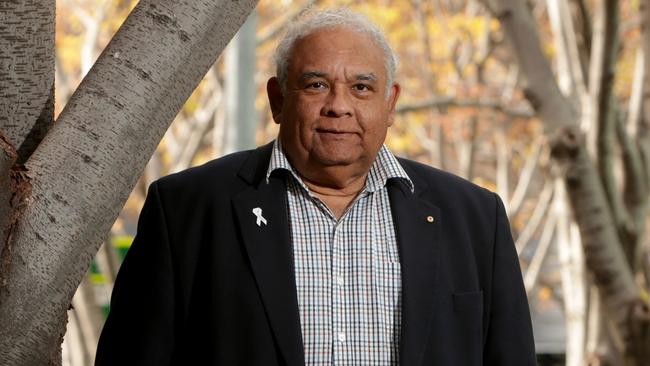Indigenous Voice model proposes ground-up approach
A proposed 24-member model of a National Voice to Parliament aims to function with a ground-up approach, giving First Nations’ voices a say from every part of their communities.
SA News
Don't miss out on the headlines from SA News. Followed categories will be added to My News.
Before the Australian people potentially find themselves voting at a referendum to enshrine an Indigenous Voice in the constitution, the public is calling for more detail on what it will look like, and how it will work.
Currently in the possession of Prime Minister Anthony Albanese, sits a proposed model that has been developed by two senior Indigenous academics, Kungarakan and Iwaidja man, Professor Tom Calma, and Iman woman, Professor Marcia Langton.
Speaking to the Advertiser about the proposed model that will form the basis of what a future Voice could look like, Professor Calma said the final proposal for a National Voice would be a 24-member model, including five members representing remote regions, and one representing a significant number of Torres Strait Islander people living on the mainland.
The model would be gender balanced with each state and territory having a male and female representative, including two co-chairs both male and female.
Mr Calma said the model would function with a ground-up approach, giving people from all walks of a community a say in matters that impact their lives.
“We looked at a structure that was more inclusive, so it would mean that not only community-controlled organisations and (Voice) members would have a say, but also the general population would have their voices heard,” said Calma.
Membership for the National Voice would be determined and structurally linked to Local and Regional Voices within each state and territory, who would collectively determine National Voice members from their respective jurisdictions.


In determining who would be members of Local and Regional voices, “flexibility” was seen as essential, meaning the selection of membership would be community-designed and community-run, whether it be through elections or by structures drawn from traditional lore and customs.
“It’s what works best for the communities,” said Calma.
The Voice was the first key policy to come out of Uluru Statement from the Heart in 2017, however, it was rejected by the former coalition government under Malcolm Turnbull and incorrectly deemed a “third chamber” of parliament by the then-Prime Minister and several high-ranking members of his government.
The second policy is a Makaratta Commission that would oversee treaty-making and truth-telling between Indigenous communities and the Australian Government.
The Statement calls for three key policies that can be summarised in order as; Voice, Treaty, and Truth.
“We seek constitutional reforms to empower our people and take a rightful place in our own country,” reads the Statement.
“When we have power over our destiny our children will flourish. They will walk in two worlds and their culture will be a gift to their country.”
In an exclusive interview with Advertiser in early August, Mr Albanese ensured that the Voice would be “just an advisory body” and also said that it would not be ”above parliament”, but that it would remain “subservient to the parliament.”
Mr Albanese said the Australian Government would remain the “sovereign” authority for all matters in Australia.
Throughout the consultation process, Calma and Langton visited more than 65 communities, and within those communities, there were about 130 different First Nations groups.
Following the consultation process, one of the general expectations from Indigenous people was that parliament and government would engage the National Voice at the earliest opportunity when developing policies and proposed laws that would have a significant impact on their lives.
Mr Calma said the 24 members who made up the National Voice, would have an office in Canberra but not in Parliament House and would only be consulted when the parliament required.
“They won’t be full-time, they’ll be there as and when required, to consider bills when they’re proposed, or major policy,” he said.
“I think it’s going to grow over time – it will be a secretariat that’s supportive at the national level.”
Mr Clama said the next step for the government was to bring together another group of people to “get some views off them” and test models out within the community.
More Coverage
Originally published as Indigenous Voice model proposes ground-up approach





